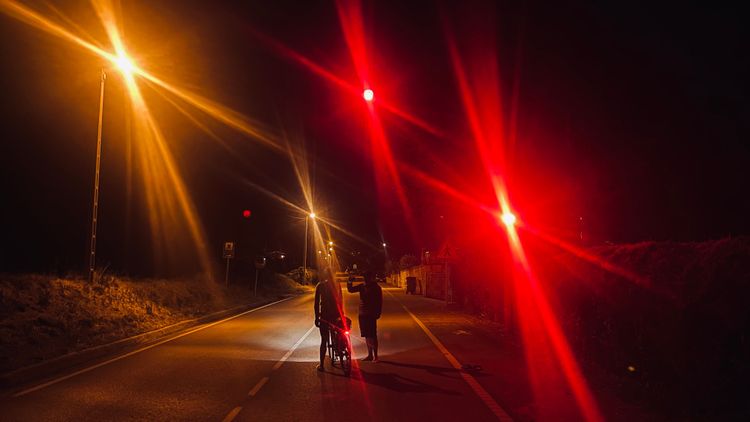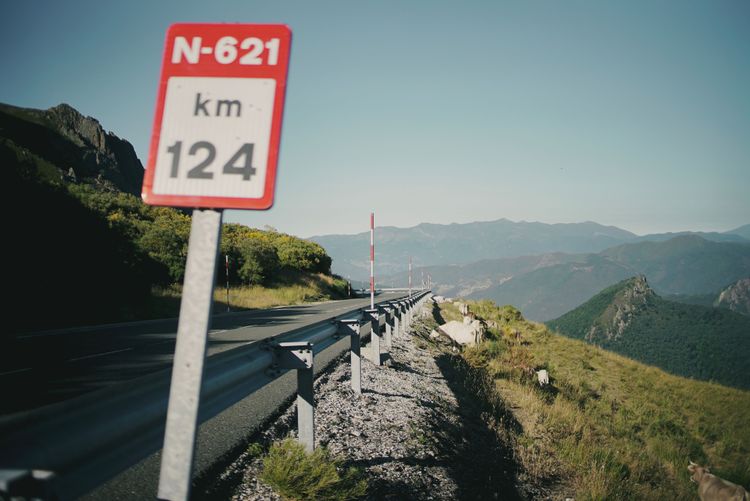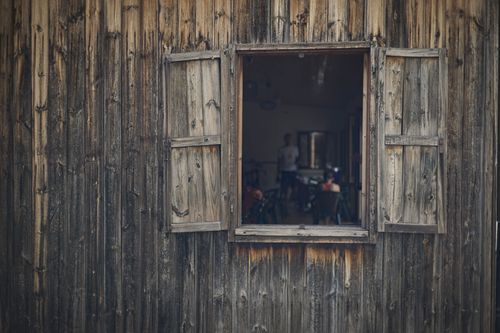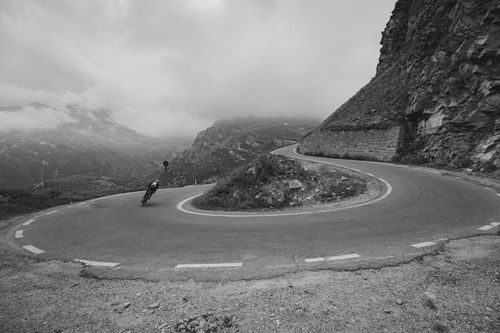The wind picked up in the afternoon. It blew from the scorching plains, but it had an illusory cooling effect as it pushed me from the east coast of Spain into the interior, towards Madrid. Soon, however, the tailwind became a headwind, pumping masses of tropical air through my nose and mouth; I felt as if my lungs would burn if I took a deeper breath. The temperature displays along the way read 43 degrees Celsius, my handlebar-mounted Garmin said 50, and my body must have started to mummify because there were no salt stains on my jersey and bibs. Had I, I wondered, used up all my minerals so early in the race?

Petrol stations, mercifully spaced an hour or two apart, offered a brief respite from the sweltering heat, treating us to air-conditioned interiors and a selection of cold drinks and ice cubes. They were both a blessing and a curse, providing an excuse to stop far more often than decency would allow; in fact, my ratio of stopping time to moving time was so deplorable that it would make a good example of how not to do ultra racing. As the first day of the race drew to a close, I was utterly spent. I had ridden a meagre two hundred kilometres; there were 3,800 kilometres to go.

The VIA Race is a 4,000-kilometre race from Spain through France to Italy, crossing all the major mountain ranges along the way: the Picos de Europa, the Pyrenees, the Massif Central, the Alps and the Apennines. The distance requires stamina, while the amount of climbing is a test of grimpeur ability: 40,000 vertical metres is like four and a half Everests. Route planning is another necessary skill, as the VIA is a free-route race where you must plan your own path between the mandatory control points – or ‘gates’ – that form the backbone of the route. A well-planned route is as important to the success of your endeavour as your legs and kit: any shortcuts you take at the planning stage are sure to lead you astray at the most inopportune moment.


As we lined up in Cartagena on the 20th of July for the grand depart, there was a palpable sense of apprehension as to how to cope with the heat that had already begun to build up, the air turning ominously white. The policeman escorting our peloton of some 80 riders to the city limits stopped and saluted us; apparently even the mad deserve a proper send-off in the land of Don Quixote, I thought. The first few hundred kilometres, to Madrid, took us across mostly flat or rolling plains with little or no shade. The landscape became increasingly monochromatic as we pedalled along the old roads that ran parallel to the motorways, the hum of the cars mixed with the deafening buzz of the cicadas. I later learned that some of the participants had chosen to hunker down in hotels just a few hours into the race and wait out the heat. What would normally be unthinkable was, in the circumstances, a perfectly reasonable choice.

North of Madrid, the Sistema Central was the dividing line between the flat and hilly sections of the race, but also a barrier against the hellish heat of the south. The climb to the pass at Puerto de Navacerrada was a torture, however, as I trudged along the countless cars fleeing the metropolis for the milder climate, the kilometre signs marking the successive stations of suffering. But the Sistema Central made good on its promise of a respite from the heat, and I even had to don a jacket as I cycled through the elevated expanse of the Meseta at night.

I love cycling at night, but with more experience I’m becoming increasingly aware of the pitfalls. Unless you are at the pointy end of the race, riding at night gives you the illusion of making up for the time wasted during the day, an excuse for being slow. It doesn’t pay not to sleep: self-neglect is neither sensible nor safe. That said, I am excited by the states that sleeplessness takes me to and I secretly long for those moments when the red lines are crossed and I am transported from the humdrum of everyday life into the uncharted territories of my restless mind; this exploration of the unknown is perhaps what draws me to the experience – rather than just the sport – of ultracycling.

With only two hours of sleep in as many days of racing, my progress through the Picos de Europa was sluggish, as I dragged my wreck of a body over pass after pass. Had I been less tired, I would have surely appreciated the rugged beauty of the limestone peaks that were once the first sight of Europe for ships arriving from the Americas. What had marked the end of a voyage for storm-battered sailors was just one stage in my adventure; with three thousand kilometres still to go, the finish in southern Italy seemed impossibly distant.

But every turn of the pedals brought me inexorably closer to the grand finale. As I rode through the La Rioja region of Logroño, towards the mighty Pyrenees and the even more mighty Alps, with the volcanic Massif Central in between, I finally felt in tune with myself, with my bike, with everything. Though the going got tougher and the Everests of the highs were inevitably offset by the Mariana Trenches of the lows, even though I waxed and waned in my self-induced state of narcolepsy, I enjoyed the journey itself and didn’t really care where it took me in a sporting sense. The joy of forward momentum was a good enough reward for the effort I had put in.

The Alps, besides the usual attraction of climbing countless lung-busting climbs, offered the challenge of deciding how to get to the Nivolet Pass. There were two options: road or off-road. The latter meant getting off the bike where the road ended at the last human settlement, Le Pont, at 2,000 metres, and walking nine kilometres until the road resumed on the other side of the mountain at 2,600 metres. The risk of trekking in road cycling shoes, in God knows what weather, saved 70 kilometres and 1,000 metres of climbing compared to the safe road option.


I chose the off-road route not so much to save time as for the adventure, although my heavily loaded bike was an argument against it. The first two or three kilometres were on an increasingly steep trail; luckily, I had managed to buy a pair of walking shoes before the Little St Bernard Pass and I had some traction as I hoisted myself and the bike over the jutting rocks, which got bigger and bigger as I climbed. When I finally reached a high plateau, I saw a vast expanse of alpine meadows surrounded by majestic peaks. This breathtaking view and the sense of empowerment that came from knowing that I had made it there on my own, that I had cycled halfway across the continent to watch the night fall on Colle del Nivolet, was all I needed to make my effort worthwhile.

If the Alps were paradise, the industrial Po Valley was hell, the missing tenth circle of Dante’s Inferno. But it was the most direct and quickest route to the south and the finish, albeit at the cost of a whole day’s riding in the searing heat and constant traffic, among the growl of lorries impatient to overtake you. The Padan Plain was also where I made my biggest routing mistake, which could have cost me the race: for reasons unknown to me, I left out one of the control points when planning my route through Italy. When I realised that something was wrong and looked at the tracking application, I saw my lone dot drifting away from the cluster of the other dots that were busily scurrying towards that bloody control point in the Apennines. Although it cost me a good six or seven hours, the mistake made me angry rather than resigned and, in a twisted way, provided the much-needed momentum to propel me through the final chapter of my journey. All the more so that, to my surprise, I was still leading the women’s race, but my lead over Saz, who was second, had shrunk to the point where I was no longer sure of the result. The downside of my anger-fuelled progress was that it made me indifferent to the charms of the surroundings, which increasingly vied for attention with postcard-pretty villages and abundant nature, as I made my way down Italy’s spine from the white roads of Tuscany to the remote mountains of Abruzzo.

When I reached the final control point at the eerie Passo Godi, the finish was tantalisingly close, only about 300 kilometres away, and I hoped to ride that distance in one go, but my exhausted body clearly warned me not to. Episodes of microsleep – where I would nod off for a second or two – would sometimes send me wobbling off the road; I was lucky that it ended there. So, on the last night of the race, with less than 200 mostly flat kilometres to go, I lay in my sleeping bag on a meadow under an impossibly starry sky, thinking with both impatience and regret about the finish the next day.

Giovinazzo brought a sense of closure with the warm welcome I received from the VIA organisers and other participants. After thirteen days on the bike, I plunged into a well-deserved frenzy of eating, sleeping and socialising, finally feeling at peace.



















